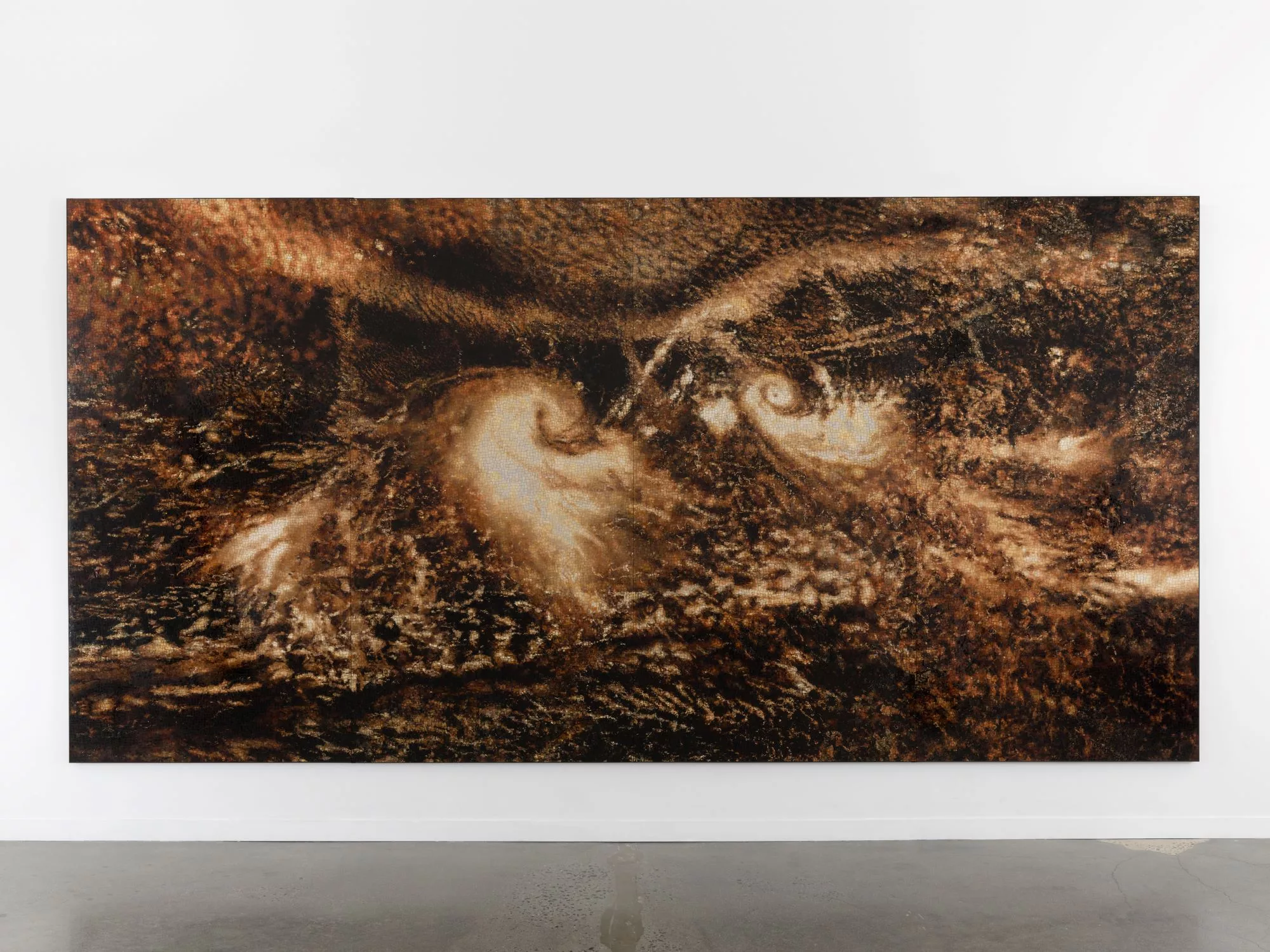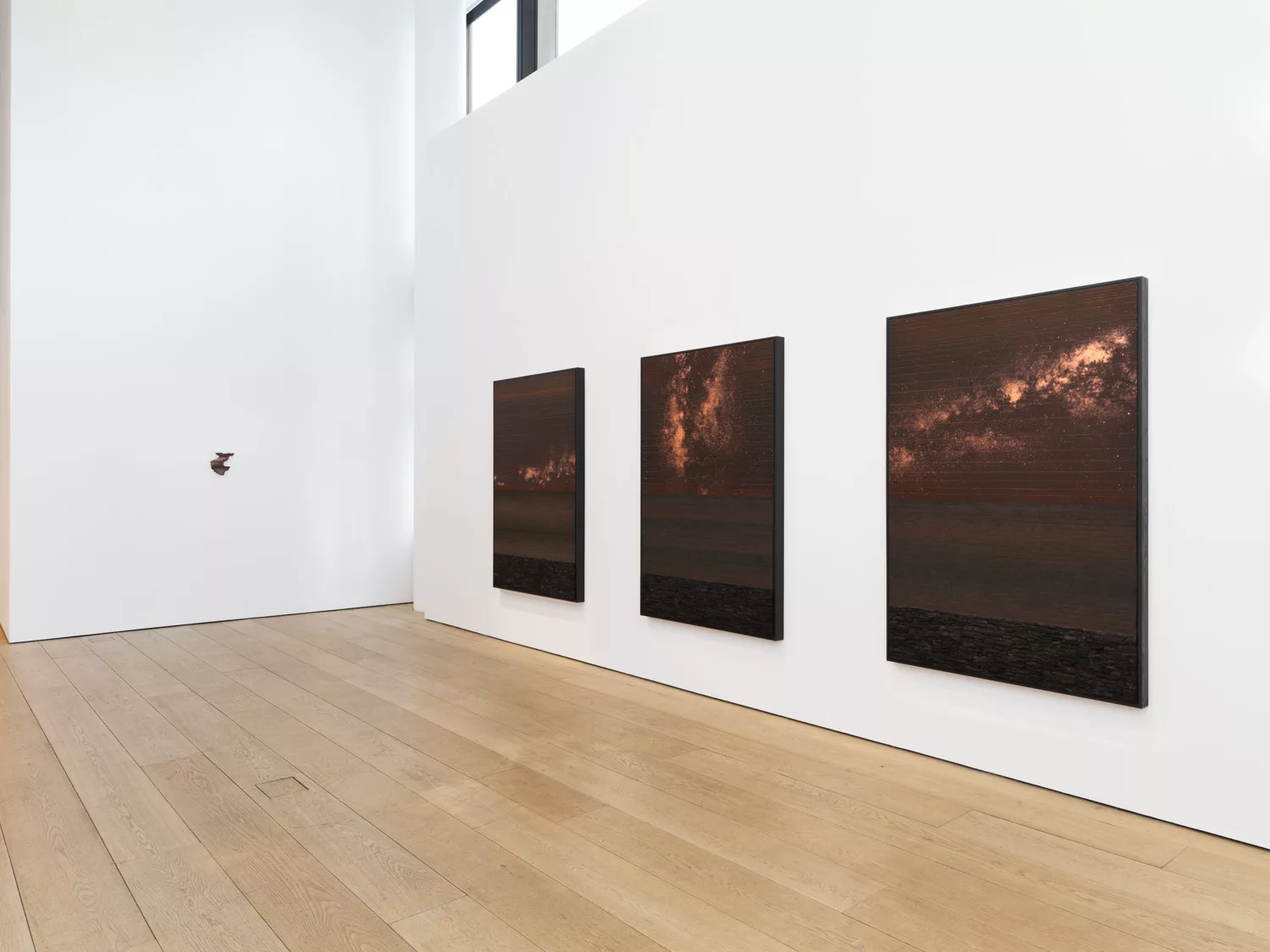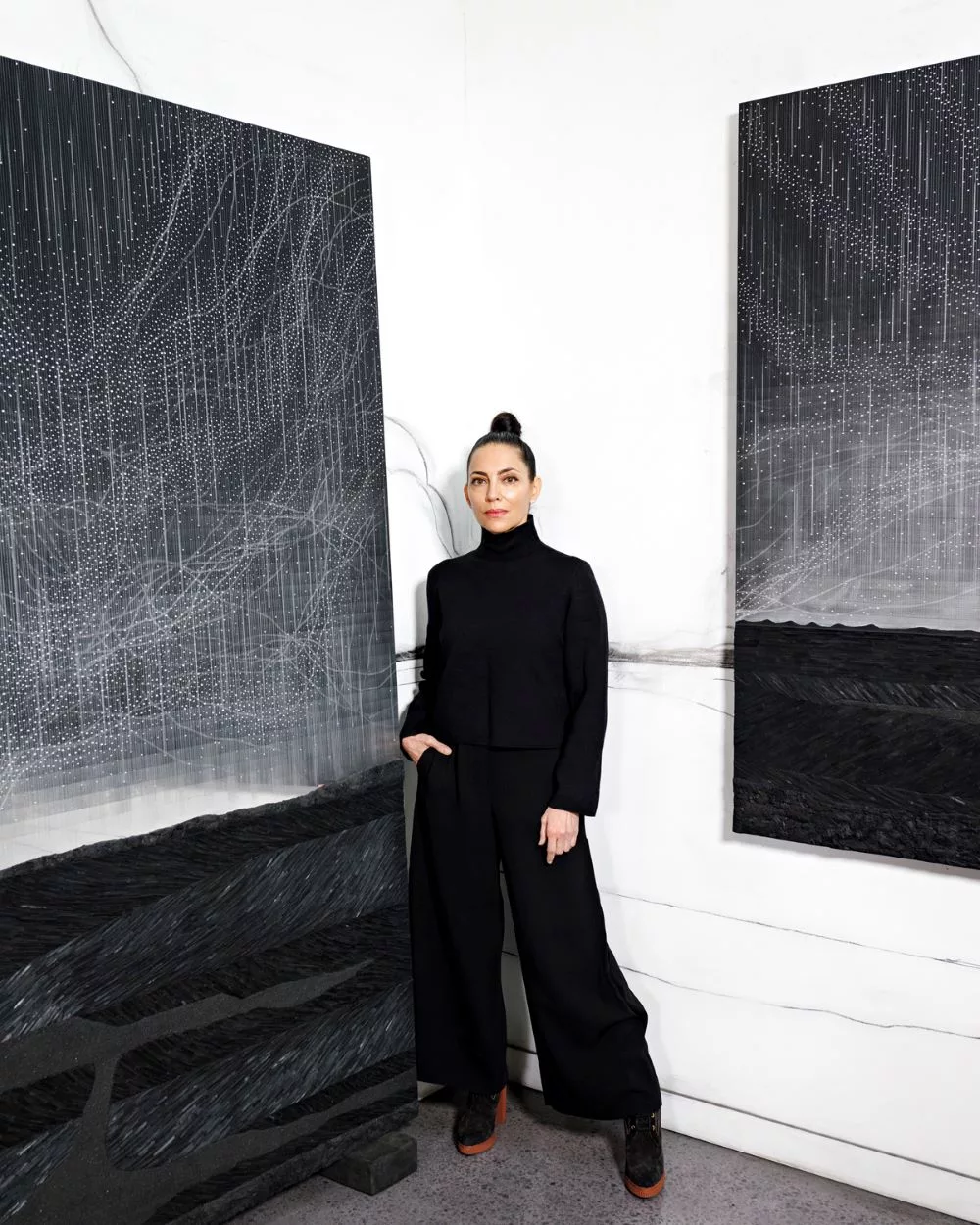
‘In my work, I am not illustrating my identity. What I am trying to do is to understand myself in the world. I find that the label identity is very limiting in what aspects of oneself are included because there are parts that are very subtle and cannot be defined. There are all of those unnamable and invisible aspects of who we are, who we think we are, and who we are in relation to one another, and about where we come from or where we live or belong. These aspects can fluctuate,’ says American artist Teresita Fernández.
Born and raised in Miami by Cuban parents within the exile Cuban community of South Florida, Fernández gained a Bachelor of Fine Arts from the Florida International University in Miami in 1990 and a Master of Fine Arts from the Virginia Commonwealth Institute in Richmond in 1992. Fernández has been living and working in New York for the last few decades, and she is the recipient of outstanding fellowships and awards, on top of having exhibited her work extensively and internationally. She says of her work that ‘it’s very complex, and complexity is not very convenient for people. They want an easy story about how to describe something, but my work doesn’t do that, and I have learned to accept it. I love living in that place of art-making that is intentional, deliberate, subtle, and a little slower, maybe, and operates on a different register that is quieter.‘


Place is one of the main topics that the artist has been exploring in her work, and she has always been ‘conscious of the complexity of place and the drama of human exile, of migration and displacement’ according to a conversation that Fernández had with curator Maria Elena Ortiz in occasion of her exhibition ‘Elemental’ at the Perez Art Museum Miami (PAMM) in 2019, which was published in the exhibition catalogue. ‘I am really interested in the concept of what we call place. We can talk about a place in terms of political borders, geological and cultural specificities, and mutability because places change all the time. If you think of places, they are just sites that have accumulated lots of narratives. That’s all they are. So, I actually go through a process of learning and teaching myself about what happened in a place. Of course, the deeper you go, both physically and metaphorically, and the further you go back in history, like if you are peeling back the layers of what you see and of what you don’t see. In my work, there is this idea that we are in many places at once. But I find that the hardest part is to talk about the landscape that we carry inside ourselves, which is often tight to memories and to the way we are made as physical beings,’ she explains.

When I met Fernández at her studio in Brooklyn, NY, the artist took the time to show me her works around the studio and helped me to have a careful look at the materials as well as at the layers in the works, which was followed by an insightful conversation. ‘I do a lot of research to learn about and understand places, but sometimes it may just be about spontaneously feeling something in a place, too. It’s never just one place; it’s not just the surface you are physically standing on or your current point of view or perspective. It is everything else that has happened there. So I think places and landscapes and materials retain the information of all the other things that they had been, just like we retain and contain information about our ancestors as human beings. As it’s not just us and we are not singular things that came out of nothing, landscapes are like that too,’ she says during our recent Zoom interview.
In the past, her work developed around the historical, socio-political, or elemental aspects of place, as in her work Carribean Cosmos (2022). ‘So often we are used to defining places from a continental narrative with the mainland seen as the big piece of land that also carries the dominant narrative, while the smallest places are often seen as periphery or insignificant because of their dimension. Instead, the Caribbean as a geographic region has a very global presence despite being physically quite small,’ she says. Her choice of materials defines her work well because of their conceptual and physical connection to places. She uses gems, rocks, charcoal pieces, ceramic, and glass, just to mention some of them. For example United States of the Americas (2017-2019) is a work created with chunks of charcoal from a burnt tree, while Carribean Cosmos (2022) is composed of thousands of small pieces of glazed ceramic, and Sunrise (Sunset) (2024) is a massive work in cast concrete. Other works are combined layers of multiple materials. Her newly opened exhibition, Soil Horizon, at Lehmann Maupin in NY, took a year to prepare to make the actual works on show. It includes two large-scale sculptural pieces made by thousands of ceramic cubes, a series of copper relief panels, and her first film Cuajani, a collaborative project with Cuban artist Juan Carlos Alom. Cuajani is a black and white 16mm film shot in the Vinales valley in Cuba and it took six years to be completed. ‘It is a very beautiful work and a portrait of the landscape with people in it. But it is a portrait of the landscape rather than a portrait of the people looking at the landscape. It is very poetic in its imaginary,’ Fernandez says.

‘Although there are things that are important to me, like experiences that inform who I am, the more I develop as an artist and the older I get, the more interested I become in the parts of myself and in my relationship to places. Our relationship to ourselves is actually very much like the landscape: it’s a fluctuating and changing thing because we are not fixed, and this is part of the reason why I say that it isn’t that simple and that’s not I am necessarily interested in to do work about a soundbite that has a story about my identity. In fact, I have had very intimate experiences in places that have nothing to do with what would be thought of as connected to my identity. Therefore, I believe that places are things that we carry inside of us, and they are cumulative, not linear, layered, illogical sometimes, unpredictable too, and never completely formed. I think that there’s a good analogy with language in this way that we are constantly evolving, and what is framed as identity can never be completely fixed.’
Written by Romina Provenzi





